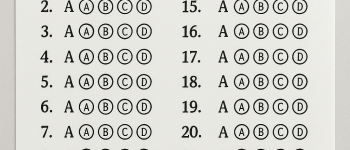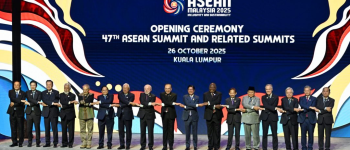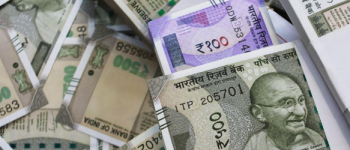India–UK Free Trade Agreement
29th Jul 2025
Read

TABLE OF CONTENTS
- Key Provisions of the India- UK FTA
India and the United Kingdom are poised to sign a landmark Free Trade Agreement (FTA) on July 24, 2025, during Prime Minister Narendra Modi's official visit to London. This will be India's first major bilateral trade agreement with a developed economy in over a decade, following almost three years of negotiations. The agreement is expected to come into force within a year, subject to ratification by the UK Parliament and India's Union Cabinet.
About Free Trade Agreements (FTAs)
• FTAs are pacts between countries to reduce or eliminate tariffs and non-tariff barriers on goods and services.
• They often cover areas like intellectual property rights, public procurement, and regulatory cooperation.
• FTAs are exceptions to the WTO's Most Favoured Nation (MFN) principle.
Key Provisions of the India- UK FTA
Major tariff concessions
For the UK:
• Alcoholic Beverages: Tariff on Scotch whisky and gin reduced from 150% to 75% immediately, and to 40% over 10 years.
• Automobiles: Tariffs exceeding 100% on UK-manufactured cars to be reduced to 10% under a quota-based system.
• Other goods: Tariff reductions/eliminations on items such as cosmetics, salmon, chocolates, biscuits, and medical devices.
For India:
• 99% of Indian goods will enjoy duty-free access to the UK market. This includes:
o Textiles and Apparel: Elimination of 8-16% UK tariffs; boost expected for hubs like Tiruppur, Surat, Ludhiana.
o Footwear: Zero-duty access to benefit manufacturers in Agra, Kanpur, Chennai (e.g., Bata India, Relaxo).
o Automobiles and EVs: Indian electric and hybrid vehicle manufacturers (e.g., Tata Motors, Mahindra Electric) to benefit from reduced tariffs.
o Gems and Jewellery: Removal of up to 16% duties to support exporters from Gujarat and Maharashtra.
o Pharmaceuticals, Medical Devices: Enhanced market access to the UK.
o Auto Components, Engineering Goods: Zero tariffs to benefit firms like Bharat Forge.
o Others: Boost expected in chemicals, furniture, toys, sports goods, and machinery.
India's Strategic Gains
• Professional Mobility: Easier short-term UK entry for Indian chefs, musicians, yoga instructors, and service professionals.
• Social Security Exemption: Indian professionals on temporary UK assignments to save Rs. 4,000 crore annually by avoiding social security contributions for up to 3 years.
• Government Procurement: UK companies allowed to bid for Indian federal government tenders above ₹200 crore in non-sensitive sectors (around Rs. 4.09 lakh crore annually).
UK's Key Benefits
• Market Access for Alcohol and Luxury Goods: Gains for companies like Diageo (Scotch whisky), Jaguar Land Rover, and Aston Martin.
• Lower-Tariff entry for Automobiles: High-end British vehicles to access India under a preferential quota system.
• Procurement & Investment Opportunities: UK firms gain access to India's expanding market and public procurement.
Macroeconomic Impact
• The UK government estimates an annual GDP increase of £4.8 billion from the FTA.
• Indian exports to the UK are projected to double by 2030.
• Over 1,000 Indian companies already operate in the UK, employing over 1 lakh people and investing $20 billion.
• The UK's total FDI in India stands at $36 billion, making it India's 6th-largest foreign investor.
Why Free Trade Agreements (FTAs) Matter for India?
1. Services sector growth- FTAs significantly boost India's services sector by improving mobility for professionals in areas like IT, education, and healthcare. For example, FTAs with the UAE and Australia have liberalized visa norms and expanded cooperation across key service domains.
2. Foreign Investment Inflows- By providing regulatory transparency and investor protection, FTAs catalyze foreign direct investment. The India- European Free Trade Association (EFTA) agreement exemplifies this, with a $100 billion investment pledge spread over 15 years.
3. Supply chain resilience- FTAs are critical to diversifying India's supply chains and reducing overdependence on single sources for raw materials and technology. The India-Australia ECTA has opened avenues in sectors like green technology and EV manufacturing.
4. Technology and Innovation Partnerships- Trade pacts with advanced economies such as Japan and EFTA foster collaboration in cutting-edge sectors like digital transformation and precision manufacturing.
5. Enhanced market Access- Preferential tariff structures under FTAs give Indian goods an edge in global markets. A notable example is the India-UAE Comprehensive Economic Partnership Agreement, which allows duty-free access to 97% of the UAE's tariff lines.
Challenges and Concerns
1. Low utilization Rates- Despite the benefits, only about 25% of Indian exporters utilize FTAs, far below the 70-80% seen in developed nations.
2. Competitive Pressure on Domestic Industry- Sectors in India often struggle to compete with more efficient economies like ASEAN and South Korea due to limitations in scale, innovation, and productivity.
3. Trade Imbalances- Between 2017 and 2022, although exports to FTA partner countries rose by 31%, imports surged by 82%, exacerbating trade deficits.
4. Non-Tariff Barriers (NTBs)- India's exporters face increasing hurdles such as stringent environmental norms (e.g., EU's CBAM), technical standards, and labor compliance in partner countries.
5. Rules of Origin and IPR Challenges- Complicated certification procedures and stronger intellectual property enforcement—especially in pharmaceuticals—pose additional regulatory burdens.
Policy recommendations to maximize FTA Gains
• Align FTAs with Industrial Policy Goals- Integrate FTAs with the Production Linked Incentive (PLI) scheme to ensure preferential access for supported sectors.
• Strengthen value Chains- Develop specialized industrial parks, supplier development programs, and skill clusters to improve integration across value chains.
• MSME empowerment- Launch “MSME Global Connect” hubs with streamlined credit access, export incentives, and support tailored to trade agreements. Create dedicated FTA-centric MSME export centers.
• Re-focus Existing FTAs- Shift emphasis from low-margin exports to high-value sectors such as electronics, auto parts, and chemicals.
• Promote services and R&D- Bolster innovation in export-oriented sectors and prioritize knowledge-based services (IT, BPO, fintech) in future trade frameworks.
Conclusion
The India-UK Free Trade Agreement marks a pivotal moment in India's trade strategy—it is the first such deal with a developed country in over a decade. While it offers opportunities for greater market access, technology partnerships, and professional mobility, realizing its full potential will depend on India's ability to align domestic policy, support industry competitiveness, and streamline trade facilitation mechanisms.
Feel free to use images in our website by simply providing a source link to the page they are taken from.
-- Epoch IAS
Explore By Category
Latest Posts
Share views on India–UK Free Trade Agreement
Please keep your views respectful and not include any anchors, promotional content or obscene words in them. Such comments will be definitely removed and your IP be blocked for future purpose.
 9th Aug 2025
9th Aug 2025
 29th Jul 2025
29th Jul 2025
.png) 8th Aug 2025
8th Aug 2025
 31st Oct 2025
31st Oct 2025
 30th Oct 2025
30th Oct 2025
 29th Oct 2025
29th Oct 2025
 29th Jul 2025
29th Jul 2025
 27th Aug 2025
27th Aug 2025
